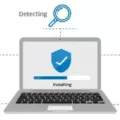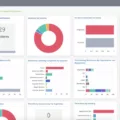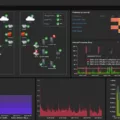Penetration testing scanners are a powerful tool for any security professional or IT team. They provide an invaluable resource for assessing the security of your network infrastructure, websites, and applications. These scanners help you identify weaknesses in your system that could be exploited by malicious actors.
When it comes to penetration testing scanners, there are many different options available. It’s important to choose the one that best suits your needs and provides you with the most comprehensive coverage. Some of the most popular options include Nessus, Core Impact Pro, Nexpose, Metasploit Pro, and QualysGuard. Each of these scanners offers its own unique features and capabilities so it’s important to research each one before making a decision.
Nessus is a powerful scanner that can detect thousands of vulnerabilities in your system. It has a detailed reporting feature that gives you visibility into the vulnerabilities found on your network or website as well as their severity levels. Core Impact Pro is another popular option as it provides an extensive list of exploits and can scan both external and internal networks simultaneously. Nexpose is another scanner designed specifically for network security assessment and it has advanced reporting capabilities allowing you to quickly identify potential threats in your environment.
Metasploit Pro is an open-source penetration testing platform that allows users to perform tests using various techniques such as manual exploitation, port scanning, vulnerability scanning, web application scanning, database scanning, fuzzing, etc. while keeping track of all findings during the test process. Finally, QualysGuard is an advanced scanner that provides a detailed report on any potential security flaws found during its scan as well as recommendations on how they can be remediated quickly and effectively.
Overall, penetration testing scanners are essential tools for any IT team or security professional looking to assess their system’s vulnerabilities and develop strategies to protect them from malicious actors or data breaches. With so many different options available it’s important to research each one before making a decision so you can choose the right one for your needs!

Types of Pen Tests
The three main types of penetration testing are Black Box, Grey Box, and White Box.
Black Box Penetration Testing is a type of assessment in which the tester has no prior knowledge of the system or network being tested. The tester has to discover everything about the system through reconnaissance and then conduct the actual pen test. This method is often used to determine how secure a system or network is from an outside attacker and to identify any vulnerabilities that could be exploited.
Grey Box Penetration Testing combines elements of both Black Box and White Box Pen Tests. In this method, the tester has limited information about the target system such as IP addresses, usernames, passwords, etc., but does not have full access or control over it. This allows for more thorough testing as the tester can focus on specific areas of interest while sill being able to find vulnerabilities that might be missed by a Black Box test.
White Box Penetration Testing is a type of pen test where the tester has full access and control over the target system or network. This allows for complete testing and identification of potential vulnerabilities in order to provide an accurate assessment of its security posture. The tester typically receives detailed information about the system before beginning the assessment including open ports, services running, etc., giving them full visibility into its structure and configuration.
The Four Phases of Penetration Testing
The first phase of penetration testing is Planning. During this phase, the pen tester will gather information about the target system, such as its architecture, network topology, and services that are running. This information can be used to identify potential vulnerabilities.
The second phase is Data Collection. The pen tester will use various tools and techniques to collect data from the target system, such as port scanning and vulnerability scanning. This data can be used to further identify potential vulnerabilities or misconfigurations in the system.
The third phase is Identifying & Characterizing Security Vulnerabilities. The pen tester will use their knowledge of common security vulnerabilities to identify ones present in the target system. They will also analyze and characterize these vulnerabilities to determine their severity and potential impact on the target system.
The fourth phase is Reporting Findings from the Penetration Test. The pen tester will document all of their findings in a final report which includes details about any identified security vulnerabilities, steps taken to exploit them, and recommendations for mitigating them. This report can then be used by organizations to enhance their security posture and protect against future attacks.
The Best Pen Test Tool for Cybersecurity Professionals
The best pen test tool is dependent on the specific use case and requirements of a user. However, there are some tools that stand out in the field of penetration testing due to their robustness and ease of use. A few of the most popular tools include Aircrack-ng, Burp Suite, Cain and Abel, CANVAS by Immunity, John the Ripper, Kali Linux, Metasploit, and SQLmap.
Aircrack-ng is an open-source tool used for monitoring network traffic and cracking encryption keys. It also provides a suite of tools for assessing wireless networks. Burp Suite is a web application security testing platform with features such as automated scanning, authenticated scanning, and manual pen-testing capabilities. Cain & Abel is a password recovery tool that can be used to crack various types of encrypted passwords. CANVAS by Immunity provides a graphical user interface that allows users to create custom exploits for target systems. John the Ripper is an open-source password-cracking tool designed to detect weak passwords quickly. Kali Linux is a Linux distribution designed specifically for penetration testing and security auditing purposes. Metasploit helps users exploit vulnerabilities in systems or networks through its comprehensive database of exploits and payloads. SQLmap is an automated vulnerability detection tool for databases that can be used to find SQL injection flaws in web applications.
Ultimately, it’s important to remember that each pen test has its own unique needs and requirements so it’s important to consider all available options before making a decision on which pen test tool to use.

Source: indusface.com
The Benefits of a Penetration Test
A penetration test is also sometimes referred to as an ethical hacking test, a security audit, or a vulnerability assessment. It is a process wherein an ethical hacker (or team of hackers) attempts to gain access to systems, networks, or applications in order to identify any potential vulnerabilities that could be exploited by malicious actors. The goal of the penetration test is to identify and address security weaknesses before they can be used by attackers.
Do I Need Coding Skills for Penetration Testing?
No, coding is not strictly necessary for penetration testing. However, having a basic understanding of coding or scripting languages such as Python can be highly beneficial for penetration testers. Python is especially useful in the field of cybersecurity because it allows for the development of powerful scripts and tools to help identify and address security weaknesses. Learning the basics of coding can help pen testers better understand the technical aspects of vulnerability assessment and exploitation, which can prove invaluable in identifying risks and taking proactive steps to protect against them.
Steps of Penetration Testing
1. Reconnaissance: This is the first step in any penetration testing process and involves gathering information about the target environment. This can include researching public sources of information, such as websites, domain names, IP addresses, and social media profiles. It can also involve using various tools to probe the target network for more detailed information.
2. Scanning: After reconnaissance is complete, the next step is to use scanning techniques to identify open ports on the target system and determine what services are running on each port. Various tools exist to scan networks for open ports and vulnerabilities, such as Nmap or Nessus.
3. Vulnerability Assessment: After scanning is complete, a vulnerability assessment can be performed to identify potential security flaws in the target environment that could be exploited by an attacker. This can involve examining configuration settings, patch levels of installed software packages, or identifying known vulnerabilities associated with specific applications or operating systems.
4. Exploitation: Once potential vulnerabilities have been identified, they can be exploited by an attacker in order to gain access to sensitive data or functionality on the target system. Depending on the nature of the attack vector used, this may involve writing custom code or using existing exploits that are publicly available.
5. Reporting: The final step in any penetration testing process is reporting your findings back to management or other stakeholders within your organization. This involves providing a summary of what was found during each phase of testing and providing detailed recommendations on how to remediate any identified issues in order to improve security posture.
The Process of Pen Testing
Pen testing, or penetration testing, is a security practice used to identify vulnerabilities in computer systems and networks. The process involves attempting to gain access to a system or network without authorization from the owner or administrator. Pen testers use a variety of tools and methods to identify potential vulnerabilities and then attempt to exploit them. Tools used may include web application scanners, vulnerability scanners, port scanners, wireless sniffers, fuzzes, packet injectors, and exploit frameworks. Pen testers also leverage social engineering tactics such as phishing emails or physical access methods such as lock picking and tailgating.
Once pen testers gain access to a system or network, they can analyze the security policies and configurations for weaknesses that could be exploited by malicious actors. In addition to looking for known vulnerabilities like software bugs and misconfigurations, pen testers also look for weak passwords, missing patches, and other areas where further hardening is needed. Once identified, these issues are documented in a report that details the risks posed by the vulnerabilities found and provides recommendations for remediation.
Conclusion
In conclusion, penetration testing scanners are an essential tool for any organization looking to keep its systems secure. They provide a detailed assessment of potential vulnerabilities and security weaknesses, helping to identify areas needing improvement. With the right knowledge and experience, these scanners can be used to perform efficient and effective tests that will ensure the security of your systems. Additionally, with the right certifications and training, individuals can become certified penetration testers who can use these scanners to provide comprehensive security assessments.








